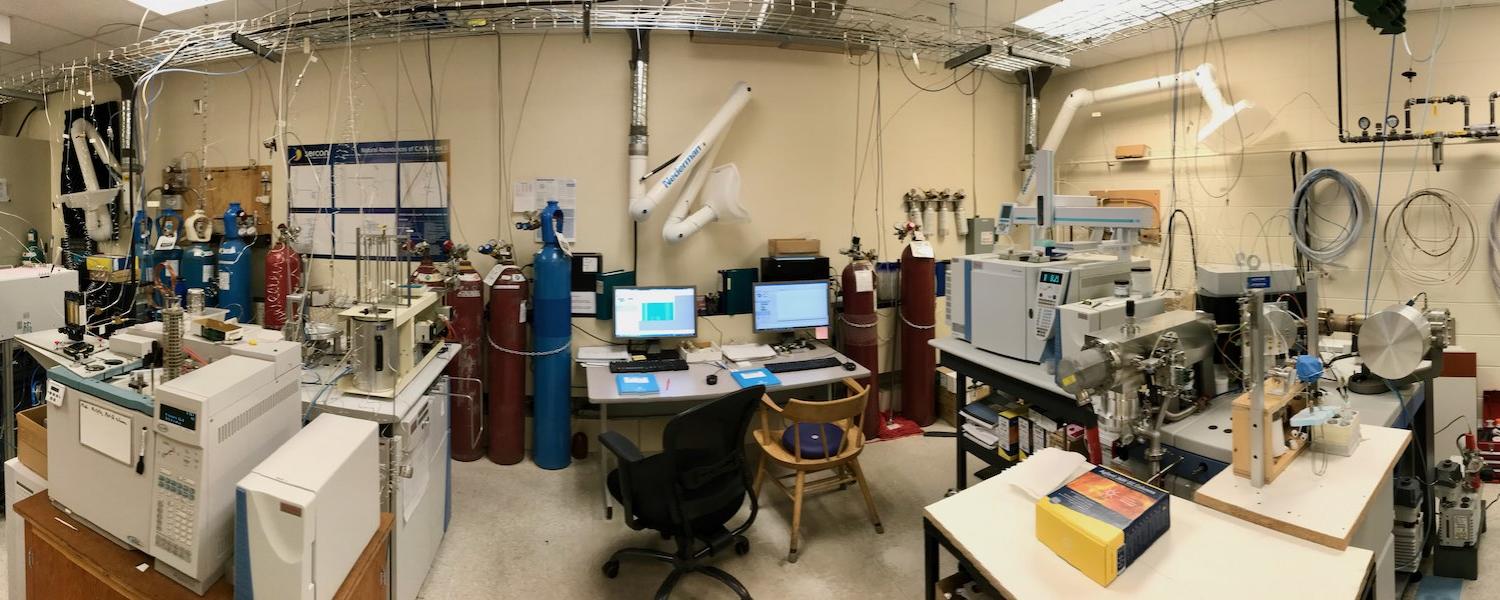
Isotope Science Lab
Submission of water samples for stable isotope measurements to the ISL
All samples must be free of debris and excess sediment (leaves, twigs, algae, sediment etc.) and should be field filtered to a minimum 0.45mm pore size.
Notes on sample collection:
- For dissolved nitrate and dissolved sulfate isotopic analysis, field filtration to 0.45um pore size is critical as it removes bacteria which can compromise both δ15NNO3- and δ34SSO4= values.
- Bacterial activity will not affect δ18O or δD values
- High flowing groundwater wells are often clean enough that no filtration is necessary if only δ18O and δD are required
- Oil & gas production well waters should be collected so that they are as free of petroleum products as is possible
- To minimize the number of bottles used, a single, large (1 liter or 500 ml) sample can be submitted. We will sequential analyze δ18O & δ2H, δ13CDIC and δ34SSO4 by removing aliquots as needed. Samples for δ15N & δ18O of dissolved nitrate should be collected in a separate bottle.
- Collecting and retaining a duplicate of each sample (incase of loss during transport or transfer to the ISL) is always a good idea
Notes on sample submission:
- Completion of an ISL - Sample Submission form is mandatory
- Always use waterproof labels and markers when labeling sample bottles/vials
- Use abbreviated sample IDs (12 characters or less)
- Refrigerate samples for transport to the ISL (cooler with icepacks is fine). Dissolved nitrate samples can be frozen
- If samples can be kept cool and transported to the ISL within a few days, NO biocides are necessary
- NO biocides should ever be added to dissolved nitrate samples
All samples must be submitted to the ISL via the lab manager. Submission forms and shipping address can all be found on this website. For advice about more complex sampling situations contact the lab manager: islmanager@ucalgary.ca, or call the lab 403-210-6003 to discuss.
-
ISL technique sensitivity
Minimum 2 ml needed for 18O measurement.
2HH2O analysis requires 0.5 ml minimum.
-
Quantity Required for Isotopic Analysis
A single 20 ml is sufficient for both.
-
Container
Standard high density polyethylene (HDE) or nalgene botles with tight fitling caps. More critical is the cap liner. Polyethylene cone liners or rubber liners are best. Avoid cap liners made with any part of pulp (cardboard) as they will swell and compromise cap tightness.
-
Comments
- Minimally coarse filter sample in field.
- Flush sample bottle a minimum of 3 times with sample.
- Fill vial to capacity and cap tightly. Avoiding evaporation of sample via poor sealing cap is main concern.
- Wrapping a small strip of parafilm or tape around the cap skirt and bottle neck helps stop the caps from loosening during transport and/or storage.
-
ISL technique sensitivity
30 ppm [HCO3-] is measurable.
-
Quantity Required for Isotopic analysis
Minimum of 50 ml is required.
-
Container
Standard HDE sampling bottles with proper sealing cap.
-
Comments
- Minimally coarse filter sample in field.
- Flush sample bottle a minimum of 3 times with sample.
-
ISL technique sensitivity
0.06 ppm [SO4=] is measurable, but a separate 1L sample must be supplied.
-
Quantity Required for Isotopic analysis
Depends on [sulfate] content of water. Ultimately we require ~0.5mg clean BaSO4 ppt. If you know your [SO4] you can calculate the minimum volume to collect. Otherwise, 500 ml to 1 liter is typically sufficient.
-
Container
Standard HDE sampling bottles with proper sealing cap.
-
Comments
- Field filter to 0.45mm.
- Flush sample bottle a minimum of 3 times with sample.
- Supply [SO4=] data if known.
- Precipitating BaSO4 yourself asap is recommended. See separate document on this website on how to ppt BaSO4 in the field
-
ISL technique sensitivity
~1 ppm [NO3-] is measurable.
-
Quantity Required for Isotopic analysis
20 ml.
-
Container
Standard HDE sampling bottles with proper sealing cap.
-
Comments
- Field filter to 0.45mm.
- Flush sample bottle a minimum of 3 times with sample.
- [NO3-] compositional data is required prior to isotope analysis.
- Samples may be frozen to preserve.
- NEVER add biocide.
